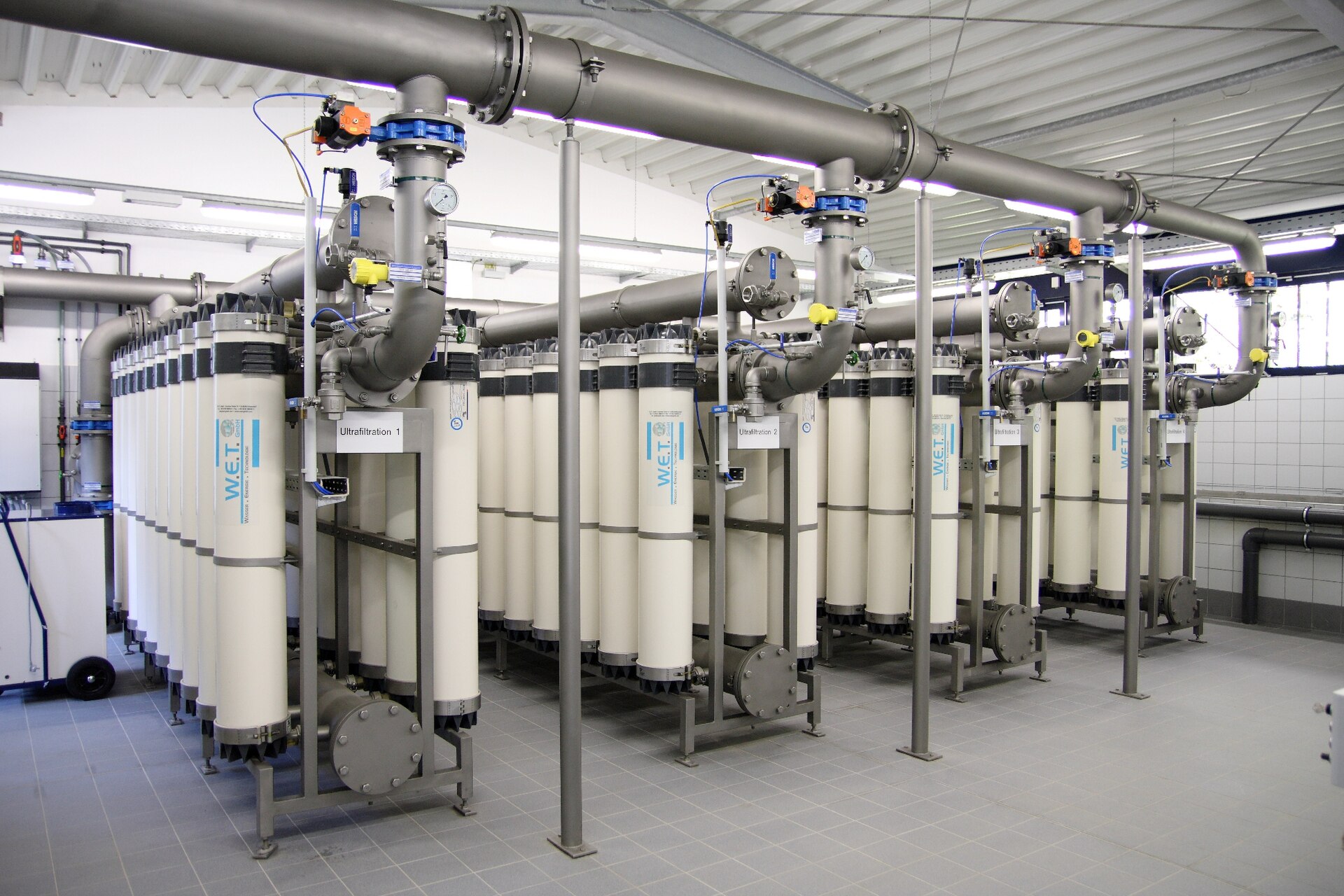Ultra Filtration System
Ultrafiltration (UF) is a variety of membrane filtration in which forces such as pressure or concentration gradients lead to a separation through a semipermeable membrane. Suspended solids and solutes of high molecular weight are retained in the so-called retentate, while water and low molecular weight solutes pass through the membrane in the permeate (filtrate). This separation process is used in industry and research for purifying and concentrating macromolecular (103–106 Da) solutions, especially protein solutions.
Ultrafiltration is not fundamentally different from microfiltration. Both of these are separate based on size exclusion or particle capture. It is fundamentally different from membrane gas separation, which separate based on different amounts of absorption and different rates of diffusion. Ultrafiltration membranes are defined by the molecular weight cut-off (MWCO) of the membrane used. Ultrafiltration is applied in cross-flow or dead-end mode.
Description
UF is used extensively in the dairy industry; particularly in the processing of cheese whey to obtain whey protein concentrate (WPC) and lactose-rich permeate. In a single stage, a UF process is able to concentrate the whey 10–30 times the feed.
The original alternative to membrane filtration of whey was using steam heating followed by drum drying or spray drying. The product of these methods had limited applications due to its granulated texture and insolubility. Existing methods also had inconsistent product composition, high capital and operating costs and due to the excessive heat used in drying would often denature some of the proteins.
Compared to traditional methods, UF processes used for this application:
- Are more energy efficient
- Have consistent product quality, 35–80% protein product depending on operating conditions
- Do not denature proteins as they use moderate operating conditions
The potential for fouling is widely discussed, being identified as a significant contributor to decline in productivity. Cheese whey contains high concentrations of calcium phosphate which can potentially lead to scale deposits on the membrane surface. As a result, substantial pretreatment must be implemented to balance pH and temperature of the feed to maintain solubility of calcium salts.






